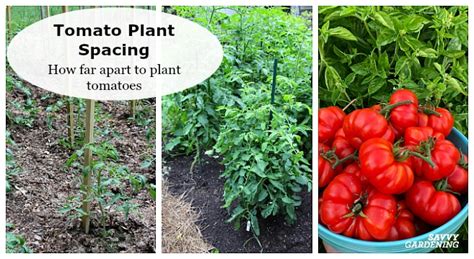Successful Gardening: The Key to Tomato & Potato Spacing
Growing plump, juicy tomatoes and abundant potatoes is a rewarding experience for any gardener. However, maximizing yield hinges on several factors, with proper spacing playing a crucial role. Cramped plants compete for resources, leading to smaller harvests and increased susceptibility to diseases. This guide delves into the optimal spacing for tomatoes and potatoes, ensuring a bountiful harvest in your garden.
Understanding the Needs of Tomatoes and Potatoes
Before we discuss spacing, let's briefly look at the individual needs of these popular vegetables.
Tomatoes: These sun-loving plants require ample space for their sprawling vines and extensive root systems. Crowding restricts airflow, increasing the risk of fungal diseases like blight. Furthermore, sufficient space allows for optimal sunlight penetration, leading to better fruit development.
Potatoes: Potatoes, although seemingly less demanding, also need adequate spacing to thrive. Insufficient space results in smaller tubers, reduced yields, and potential issues with ventilation, leading to rot. The amount of space required also depends on the potato variety; some are more compact than others.
Optimal Spacing for Tomatoes
The ideal spacing for tomatoes depends on the variety—determinate or indeterminate.
Determinate Tomatoes: These compact varieties grow to a certain height and then stop, producing fruit all at once. They generally require less space than indeterminate varieties. A spacing of 18-24 inches between plants is usually sufficient.
Indeterminate Tomatoes: These vigorous climbers continue growing throughout the season, producing fruit over a longer period. They require significantly more space, typically 3-4 feet apart to allow for proper air circulation and vine growth. Staking or caging is recommended to support their growth and prevent overcrowding.
Optimal Spacing for Potatoes
Potato spacing depends largely on the size of the seed potato and the variety. Generally, you should aim for:
- Seed Potatoes: Plant seed potatoes approximately 12-18 inches apart. This ensures enough room for each plant to develop a robust root system and produce ample tubers.
- Rows: Space the rows themselves 24-36 inches apart to allow for easy access during harvesting and to prevent overcrowding. This wider spacing also improves air circulation, minimizing the risk of potato diseases.
What is the best way to plant potatoes and tomatoes together?
Many gardeners successfully grow potatoes and tomatoes together, leveraging companion planting principles. However, careful planning is crucial to prevent competition for resources. Consider these strategies:
- Companion Planting: Planting tomatoes and potatoes together can be beneficial. Tomatoes provide shade for the soil, helping to retain moisture beneficial for potatoes. However, ensure sufficient spacing between the two plants to prevent competition.
- Strategic Placement: Plant potatoes in rows between tomato rows, ensuring adequate spacing. This arrangement helps maximize space utilization while minimizing competition. This is particularly effective with determinate tomato varieties that require less space.
- Rotation: Practicing crop rotation is essential for soil health and disease prevention. Avoid planting potatoes and tomatoes in the same location for consecutive years.
How far apart should I plant tomatoes from other vegetables?
The distance between tomatoes and other vegetables largely depends on the size and growth habits of the companion plants. As a general rule, allow at least 12-18 inches between tomatoes and other vegetables of similar size. Smaller plants might require less space, while larger, sprawling vegetables will need more distance.
How much space do tomatoes need to grow properly?
The required space for proper tomato growth significantly depends on the variety (determinate or indeterminate). Determinate varieties generally require 18-24 inches spacing, while indeterminate varieties need 3-4 feet to allow for ample vine growth and air circulation.
How close can you plant potatoes together?
Potatoes require 12-18 inches of space between plants to allow for the development of a healthy root system and plentiful tubers. Spacing rows 24-36 inches apart is recommended to improve air circulation and facilitate harvesting.
Conclusion: A Bountiful Harvest Through Proper Spacing
By adhering to these spacing guidelines, you'll significantly enhance your chances of a successful harvest for both tomatoes and potatoes. Remember that optimal spacing isn't just about maximizing yield; it's also about promoting plant health and preventing disease. Careful planning and proper spacing are key ingredients to a bountiful and rewarding gardening experience. Happy gardening!

